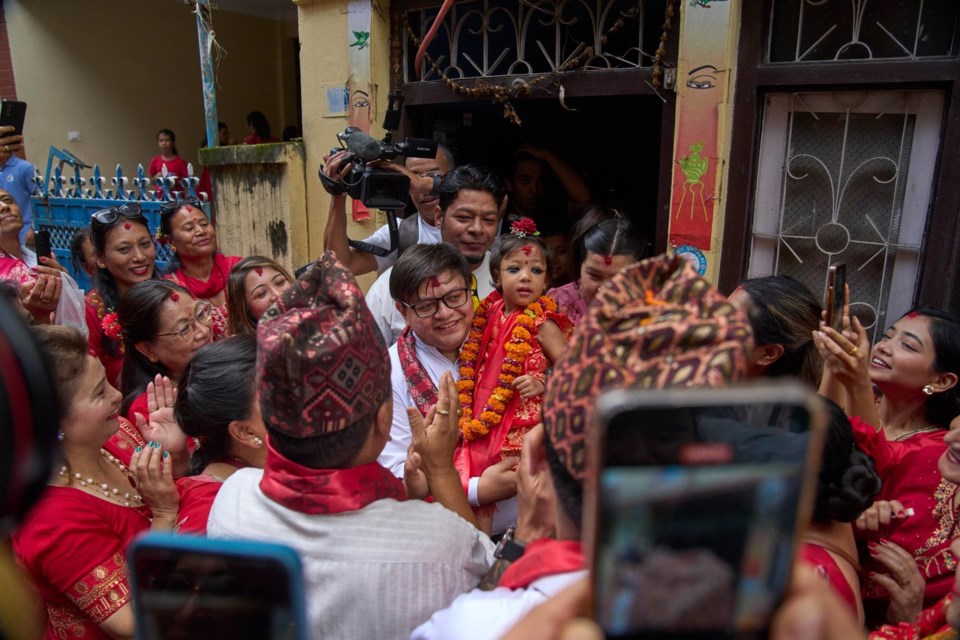Kathmandu witnessed an ancient tradition on Tuesday as a two-year-old girl, Aryatara Shakya, was chosen to serve as Nepal’s new living goddess, or Kumari, and carried by her family from their home to the temple palace where she will reside. Her selection coincided with Dashain, the country’s most significant Hindu festival, celebrated by both Hindus and Buddhists in the Kathmandu Valley.
At just 2 years and 8 months, Aryatara replaces Trishna Shakya, who became Kumari in 2017 and stepped down this week after reaching puberty, the point at which a living goddess is believed to return to mortal life. Chosen from the Shakya clan of the Newar community, Kumaris must meet strict criteria — flawless skin, perfect features, and fearlessness, even in the dark.
On Tuesday, family, friends, and devotees paraded the young goddess through Kathmandu’s narrow streets, before she entered Kumari Ghar, the ornate palace that will be her home for years. Dressed in red with her hair in topknots and a “third eye” painted on her forehead, Aryatara received offerings of flowers and money, while worshippers touched her feet with their foreheads in reverence. On Thursday, she will bless devotees, including Nepal’s president.
Her father, Ananta Shakya, said he had long believed his daughter was destined for this role. “She was just my daughter yesterday, but today she is a goddess,” he told reporters, adding that his wife dreamt of a goddess during her pregnancy.
The transition also marked the quiet departure of the outgoing Kumari, who was carried from the palace on a palanquin. Former living goddesses often struggle to adjust to ordinary life, with folklore warning that men who marry them may die young, leaving many to remain unmarried.
Traditions surrounding the Kumari have gradually evolved. The living goddess now receives private education inside the temple palace, has access to modern comforts like a television, and upon retirement is granted a small government pension of about $110 per month — slightly above the national minimum wage.
Despite the changes, the core of the tradition remains intact: a sequestered life for a child chosen to embody divine power, worshipped by thousands, and revered as a symbol of purity and protection for the nation.

